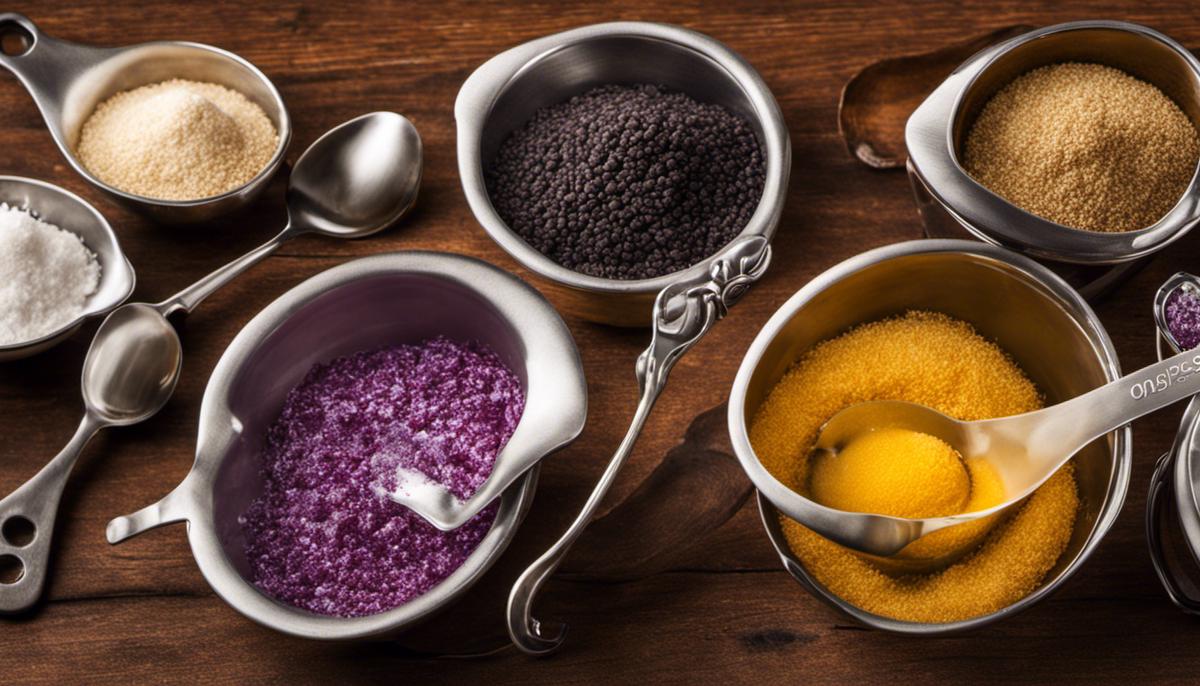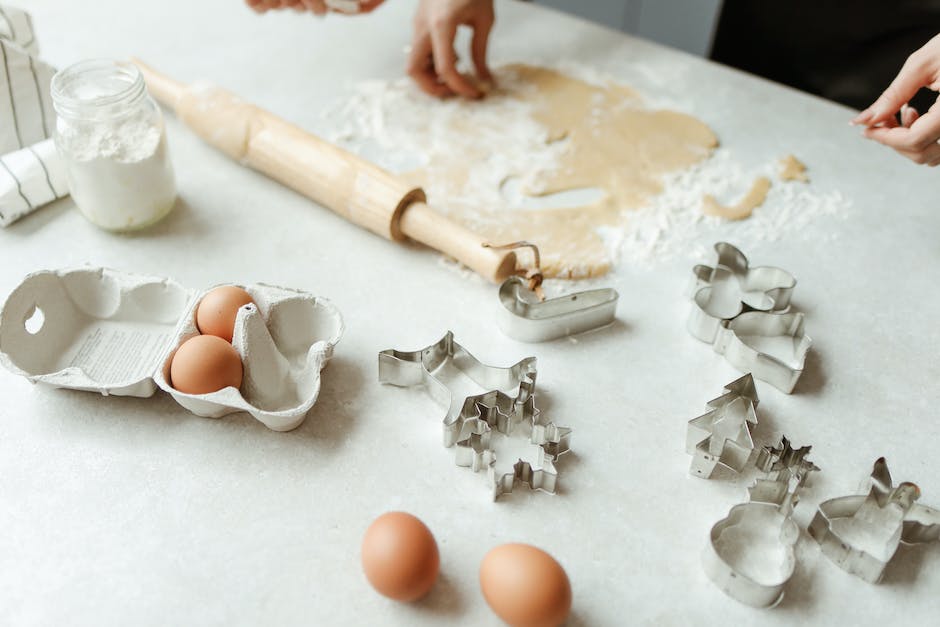Whether you’re a culinary novice or a seasoned home cook, understanding the fundamentals of cooking measurements is truly key. Not only does it provide guidance, but it ensures consistency and precision in every delectable dish you prepare. Culinary art isn’t just about combining ingredients; it also leverages both the metric and imperial systems of measurements for the perfect balance. This guide delves into the world of American cooking measurements, familiarizing you with essential units like teaspoons, tablespoons, cups, pints, quarts, gallons, ounces, and pounds in the process. It further explains how to adeptly convert between these quantities, equipping you with the valuable insight needed to master your kitchen.
Understanding Basic Cooking Measurements
The Metric and Imperial Systems in American Cooking
American cooking has a unique blend of measurements, using both the metric and imperial system, which has often been a point of confusion for many chefs around the world. Getting familiar with these units is important to deliver the best possible dishes with the right proportions.
The imperial system is mainly used in the United States, while most other countries use the metric system. An understanding of both systems is fascinating and crucial when cooking American recipes, especially when deciphering numerous recipes requiring specific measurement units.
Imperial Measurement Units
In American cooking, the imperial system uses teaspoons, tablespoons, cups, pints, quarts, gallons, ounces, and pounds.
A teaspoon is often represented as ‘tsp’ and is equivalent to approximately 4.93 milliliters. Meanwhile, a tablespoon often abbreviated to ‘tbls’ or ‘tb’ is equivalent to approximately 14.79 milliliters.
A cup is another commonly used measurement which equals roughly 8 fluid ounces or about 237 milliliters.
Furthermore, a pint is equal to 2 cups or 16 fluid ounces which approximately amounts to 473 milliliters; a quart is equal to 2 pints, 4 cups, or 32 ounces, equivalent to about 946 milliliters.
A gallon is another large unit used prominently in American cooking is equivalent to 4 quarts, 8 pints, or a whopping 128 fluid ounces.
On the other hand, ounces – fluid or weight – are frequently used in both liquids and solids. A fluid ounce is about 29.57 milliliters, whereas a weight ounce is about 28.35 grams.
Finally, pounds are larger units of weight, often used for larger cuts of meat or produce, and one pound equals approximately 453.59 grams.
Conversion Between Units
Conversion between measurement units is important in cooking, as it enables the scaling of recipes up or down according to the number of servings desired.
For instance, knowing that 3 teaspoons make 1 tablespoon can help a lot in case one of your teaspoons goes missing.
Often mentioned in cookbooks is that there are 16 tablespoons in a cup, a useful conversion when dealing with larger proportions.
16 fluid ounces make up a pint, and two pints (or 32 ounces) constitute a quart.
The largest of these, gallon, is equivalent to 4 quarts, 8 pints, or a whopping 128 fluid ounces.
Knowing that there are 16 ounces in a pound can also assist a great deal, especially when dealing with larger quantities of ingredients.
Understanding and being familiar with these measures and conversions is vital. It transforms your cooking experience, allowing it to be more enjoyable, accurate, and less stressful. Remember, cooking is an art, and appropriate measurements ensure you create your masterpiece as envisaged.

Practical Application and Spotting Recipes
Understanding Units of Measurement in Recipes
In cooking, recipes use different units of measurements for ingredients, most commonly cups, tablespoons, teaspoons, ounces, pounds, and grams. It is essential to understand how each unit is represented. A cup (c) is a volume measurement used primarily for liquid ingredients but also for some dry ingredients, like flour or sugar. A tablespoon (Tbsp) and teaspoon (tsp) are smaller volume measurements. Ounces (oz) can be used for both volume and weight depending on the recipe’s context. Meanwhile, pounds (lb) and grams (g) are used for weight measurements.
Interpreting Amounts and Proportions in Recipes
When reading a recipe, it’s important to note the amount of each ingredient required. Fractional measurements like 1/2 cup or 3/4 tablespoon pertain to portions of a whole unit. If a recipe asks for 1 1/2 cups of an ingredient, this means you need one whole cup plus half of another.
Converting Units of Measurements in Recipes
Recipes may sometimes have ingredients listed in units that you may not be familiar with, or perhaps your measuring tools only cater to a specific unit. In these instances, unit conversions are essential. Common conversions include 1 tablespoon being equivalent to three teaspoons or 16 ounces being equal to one pound. Online tools and conversion charts can be useful in these scenarios.
Substituting Ingredients Based on Volume and Weight
Replacing one ingredient with another based on volume and weight conversions requires an understanding of the ingredient’s impact on the recipe. For example, if a recipe requires one cup of sugar but you’re aiming for a less sweet version, you can use less sugar. Same goes for weight. If a recipe requires a pound of meat and you want to substitute with vegetables, you need to consider their density since a pound of meat will have a different volume compared to a pound of vegetables.
Doubling or Halving Recipes
Should you need more or less of what a recipe yields, mastering the skill of doubling or halving a recipe is beneficial. When doubling, simply multiply each ingredient by two. When halving, divide each by two. For fractional measurements in halving, remember that 1/2 of 1/4 cup is 1/8 cup. Doubling and halving require patience and attention to detail to ensure balance in the recipe’s outcome.
Practicing Incremental Measurement Skills
An understanding of how units of measurements work in recipes is crucial in adjusting them according to your needs. Practice is key. Regularly reading different recipes, familiarizing yourself with common kitchen measurements, and exercising substitutions and recipe resizing can build your confidence and efficiency in the kitchen.

Baking and Precision
Understanding the Importance of Precision in Baking
The art of baking calls for precision and accuracy in measurement unlike other forms of cooking. Each ingredient involved in a baking recipe influences the end result. For example, the amount of flour affects the structure of your baked goods, sugar determines sweetness and moistness, and eggs provide stability and moisture. Proper measurement is a direct contributor to the final success or failure of your bake. This is because baking is as much a science as it is an art, it’s based on the chemistry of how ingredients interact.
The American Standard Measurements in Baking
In America, we commonly use volume rather than weight for measuring ingredients when cooking and baking. The standard units of measurements are cups, tablespoons (Tbsp), and teaspoons (tsp). It’s also essential to understand that a liquid measuring cup and dry measuring cup are not interchangeable.
How to Measure Flour Accurately
When measuring flour, using a spoon or scoop, gently sprinkle the flour into your measuring cup without packing it down, then level it off with the back of a knife. This method is often referred to as the ‘spoon and level’ technique. It’s recommended because flour tends to compress when scooped directly from the bag, which can lead to using more flour than a recipe calls for. Using too much flour can make your baked goods dry and heavy.
The Right Way to Measure Sugar
Granulated and confectioners’ sugar should be following similar principles as flour. For brown sugar, it’s a slightly different story. Brown sugar should be packed down into the measuring cup until it holds its shape when turned out. This is because brown sugar has a higher moisture content and is more prone to air gaps.
Understanding the Chemistry in Baking
At its core, baking is essentially a series of chemical reactions. Understanding these reactions can significantly impact your baking precision. For instance, knowing that baking soda, a base, reacts with acidic ingredients like yogurt, brown sugar, or vinegar to produce carbon dioxide gases which makes baked goods rise. Or knowing that too much sugar can interfere with the formation of gluten in flour, hindering your baked goods from setting properly.
In conclusion, understanding and mastering the art of accurate measurement in baking is crucial to creating delicious baked goods. It’s not just about following the recipe, but knowing why each ingredient and their precise amount is necessary for the desired result.

Just as the right ingredients breathe life into a recipe, precise measurements ensure that the culinary creation is as tantalizing as intended. Through this exploration of cooking measurements, we’ve seen how intricately connected it is to the outcomes of our dishes, especially in baking. Accurately measuring ingredients like sugar and flour isn’t just part of the baking process; it’s a fundamental aspect of the science behind it. So, here’s to arming yourself with new knowledge, to applying incremental measurement skills, converting units, and tackling recipes-turned-math equations. Remember, cooking is a blend of art and science, and the beauty lies as much in the process as the plate.
